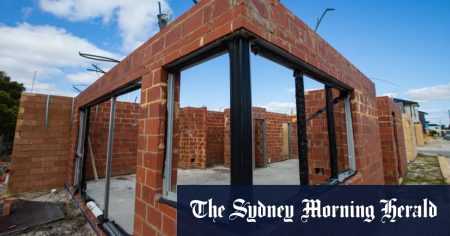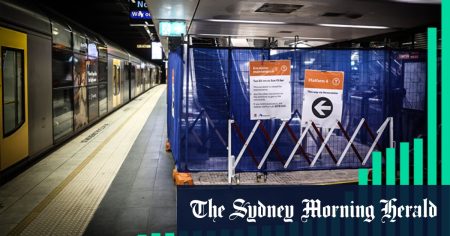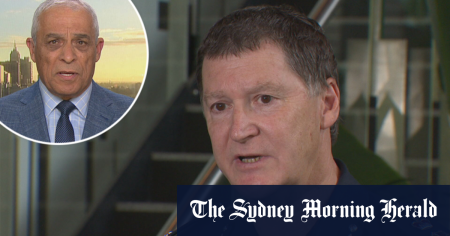Professional Bodies Focus on Principles Over Venues in Brisbane 2032 Olympic Planning
The Games Independent Infrastructure and Coordination Authority (GIICA) is currently conducting a 100-day review of the infrastructure required for the Brisbane 2032 Olympics. In their submissions to this review, key professional bodies representing vital sectors of the design and delivery process have chosen to remain neutral on the specific event venues. Instead, their contributions emphasize the principles and strategies that should guide the planning and execution of the Games. These bodies include the Infrastructure Association of Queensland (IAQ), Engineers Australia, and a joint submission from the Australian Institute of Architects (AIA), the Planning Institute of Australia (PIA), the Australian Institute of Landscape Architects (AILA), and the Design Institute of Australia (DIA).
Emphasizing Comprehensive Master Plans
Brad Wood, the 2032 Games co-chair of IAQ, highlighted the importance of considering both immediate and long-term needs. "There are obviously technical merits to each [venue], and benefits to each one, but a lot of that is quite subjective," Wood noted. The IAQ’s submission calls for the Queensland government to release comprehensive master plans that outline the infrastructure needs for the Games and the subsequent legacy use of venues and precincts. These plans, supported by planning permissions, would provide essential tools and certainty for designers, planners, engineers, contractors, and operators. The IAQ points to the London 2012 Games as an exemplary model, where clear direction and strong public and private co-investment led to successful transformations of areas around venues.
Integrating Venues with Wider Precincts
Sean Cullen, the Queensland division president of PIA, emphasized the need for a broader perspective in planning. "It’s taking a broader perspective than just a venue and looking at the whole precinct in which that sits," Cullen explained. This approach aims to position venues as catalysts for urban regeneration, maximizing social, economic, and environmental benefits. The joint submission by AIA, PIA, AILA, and DIA cites the redevelopment of Adelaide Oval as a strong case study. This stadium not only spurred significant urban regeneration but also fostered a strong connection with Adelaide’s CBD, creating lasting economic and social value. By integrating venues with surrounding areas, the submission argues, the Games can leave a positive legacy beyond the event itself.
Balancing Cost and Legacy
Andrew Reid, the Queensland division president of Engineers Australia, stressed the importance of cost-effectiveness and legacy planning. "We’d like to have an affordable Games," Reid stated. "We don’t want to break the bank building brand-new stadiums." Engineers Australia’s submission advocates for a strategic and technical advisory role within the Queensland government to ensure that the infrastructure is both cost-effective and beneficial to the community. The recommendation includes the appointment of a chief engineer and the involvement of technical experts on existing Olympic advisory boards. This approach is crucial not only for the Games but also for broader urban planning initiatives.
Leveraging Private Investment
The IAQ’s submission also underscores the potential of private investment to complement public funding. The 2018 Gold Coast Commonwealth Games athletes’ village, which cost the government about $50 million in preparation and the rest from the private sector, is cited as a successful example. This project saved a significant portion of the allocated budget, drove commercial and design innovation, and contributed to the current success of the Gold Coast Health and Knowledge Precinct. Wood believes that private-public partnerships (PPPs) can be a viable model for Brisbane, noting that while such partnerships take time to set up, they offer substantial long-term benefits. He cited Optus Stadium in Perth as another successful PPP model that could inspire Brisbane’s approach.
Ensuring Local Involvement
Engineers Australia’s submission emphasizes the need to award major contracts to local engineering and construction businesses. "Local engineering and construction businesses should have the opportunity to contribute to and benefit from the Games, reversing the trend of awarding major contracts to international firms," the submission states. This shift is crucial for fostering local growth, supporting First Nations workers, and retaining expertise and funding within the community. Reid stressed that local involvement in the Games’ infrastructure projects can help build a sustainable and resilient local industry, which is essential for the region’s long-term development.
Urging Swift Action and Long-Term Vision
With the 11-year head start for Brisbane 2032 now reduced to seven years, Wood and Cullen both agree that time is of the essence. "The inertia will have to evaporate pretty quickly," Wood said. "The time period between the end of the review and getting things moving would need to be weeks to months." Cullen added that GIICA must address several big questions, including the future of Brisbane and the region. "To bring forward what we would want to do anyway as a city, as a region, that’s the sort of long-term approach that should be taken," he said. Both professionals recognize that the success of the Games hinges on a balance between swift action and a forward-looking, sustainable vision that benefits the community long after the event concludes.
By focusing on these principles and strategies, the professional bodies aim to ensure that the Brisbane 2032 Olympics not only meet the immediate needs of the event but also leave a lasting and positive legacy for the city and its residents.












